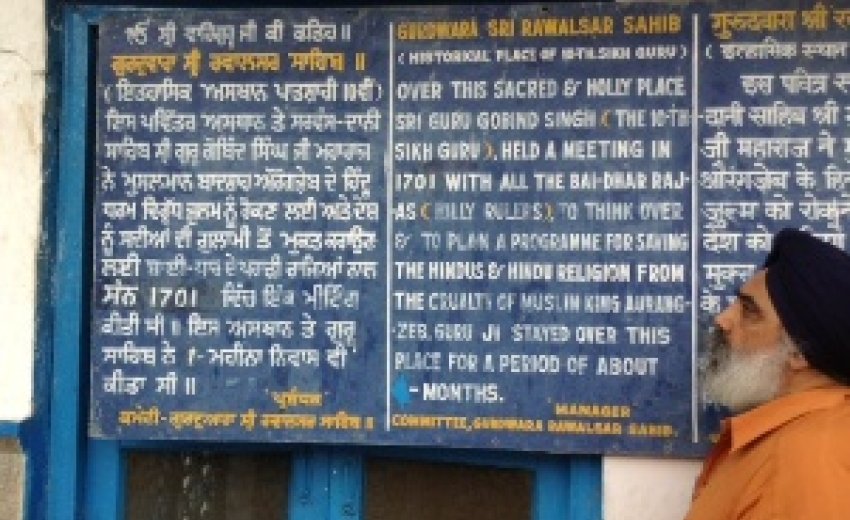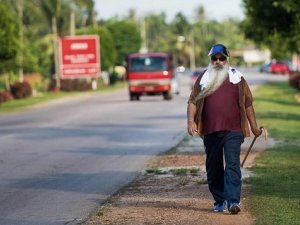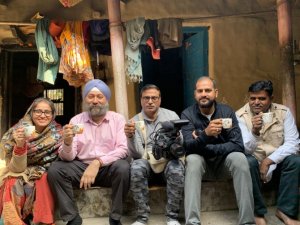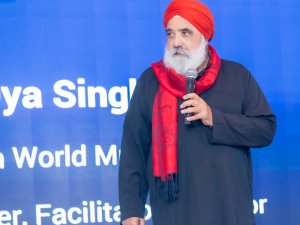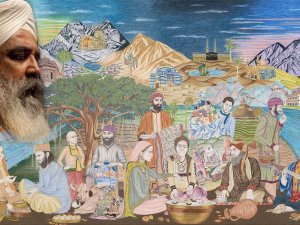Rawalsar - the first call for Indian Independence
"So, this is your 'bhujangy'?"
I had heard the term when young amongst the 'granthi fraternity' in Malaysia but never knew its true import till I visited Rawalsar. 'Bhujangi' to me just meant 'youngster' or perhaps 'son'. I was referred to as my venerable father's 'bhujangy'.
On Besakhi Day 1701 Guru Gobind Singh who had been invited by the hill rajas (of the Himalayan foothills) to discuss ways to rid themselves of the yoke of tyranny imposed on the Indian subcontinent by Aurangzeb, ruler of the Moghul empire, made a 'Declaration of Independence' against the tyranny.
This happened at Rawalsar (in present day Himachal Pradesh) which is about 25 km. from the township of Mandi.
This is probably the first declaration of independence in present day India and you will not pick that up from Indian history books where even Guru Gobind Singh is not, or hardly, mentioned.
One week in 45 degrees centigrade day heat and 31 degrees at night in Ludhiana and I was ready to crawl into a cooling unit or fridge. Bai Ji Gurmukh Singh decided on a trip to Himachal, the foothills of the Himalayas where the weather is kinder.
After a few days just past Dalhousie at a scenic spot called Khajjiar, we decided to visit Palampur where some good friends have their summer residences, and that is when Bai Ji (my oldest brother) suggested Rawalsar and I said - "who? what?"
He was horrified that I did not know of Rawalsar! Sure I know of Anandpur Sahib, Guru-ka-Lahore, the Sarsa, Kiratpur, Pervar Vishoda Sahib, even ritual-ridden Manikaran etc. in that region, but Rawalsar - not a clue.
On hearing about its significance I wanted to visit. I must admit that I am not the 'metha-tek at every Sikh shrine in Guruan-dhi-dharti' type, but the historical significance of Rawalsar intrigued me. So a one-day dash from Khajjiar to Mandi (about 200km) over some very high passes and through hot humid valleys and some stunning picturesque scenery, we reached Rawalsar 25km north of Mandi by late afternoon. Round a bend on a mountain side about 4000 ft. high one was suddenly transported to some small village town, in Tibet perhaps, because atop one prominent hill was a huge affluent looking Buddha-like statue about three storeys high seated cross-legged surrounded by stupas and pagodas and structures of blazing red, maroon and bright yellow - Buddhist colours. One finds it hard to believe that one is still in India!
Generally Buddhist influence on the landscape is very noticeable throughout Himachal especially of course in Dharamsala (capital-in-exile of the Dalai Lama) and McCleodgunj. It does lend to a very calming and peaceful atmosphere.
In the middle of this quaint Buddhist influenced 'basti' surrounded by mountains is the beautiful lake called Rawalsar.
We checked ourselves into the Country Inn for a night (very reasonable rates I must add), took a quick bath and while the light was good walked to the gurdwara. Around the lake which has now virtually been taken over by the Buddhists there is a beautiful walkway and it is teeming with fish to feed if one is so inclined. We were told to look out for snakes but did not see any.
The gurdwara, (and Guru Gobind Singh Ji's visit in 1701), for which Rawalsar is famous for, holds a very prominent spot, atop another hillock but is very small and unspectacular. This needs to change for the enormity of its significance as I found out.
A plaque (see picture) tells the brief outline of Guru Sahib's visit and stay fairly well, in Gurmukhi with a rather lame translation in English, or is it just mischief to take the non-Punjabi speaking or foreigner away from its real significance. Those who know both languages will pick that up very quickly.
On a stray note about language and translations - I am finding some rather ridiculous translations and just hilarious English usage in general, in north India especially in Punjab.The level of English is certainly taking a beating. For example in a road-side 'dhaba', statue was spelt 'stachu' and differing spellings for toilet like 'toolet', 'tolet', 'tolate' and the proverbial, when you have the 'runs' in India or 'Delhi belly' as it is called in cricketing terms - 'toolate'! At a secondary school just near Jullundhur from Ludhiana I saw a sign which said it all - 'English class in backside'. Sorry, I digress, back to the narrative...
The Gurmukhi part of the inscription at the gurdwara clearly talks of discussing strategies to rid the land of the tyrannous yoke of Aurangzeb, whereas the English version talks of 'plans to save Hinduism ...' etc.
Nevertheless what I heard from the granthis and sewadhars is that there was a proclamation by Guru Sahib to fight for freedom from the tyranny of Aurangzeb. Sadly the hill rajas did not have the stomach to fight. They were happy to remain subservient to the tyranny and though they paid lip service to the motion, they were not prepared to back it up.
An old Nihang told me that after the 'dialogue' the legendary 'king of snakes' of Rewal, taking on human form, visited and paid obeisance to Guru Sahib and after expressing regret at the insipid responses of the hill rajas promised that his 'feniar sepan dhe bache' (sons of venomous vipers) called 'bhujangies' will reincarnate as his khalsa and fight by his side - hence the term 'bhujang' or 'bhuyang'in Dasam Patshah's bani and 'bhujangie' for a Khalsa's son. Then the Nihang leaned closer and whispered- 'Only a few know, it was Lord Shiva actually'.
I urge all brothers and sisters to promote gurdwaras like Rawalsar which have a strong historical significance rather than gurdwaras and shrines which are associated with miracles and magic. I do accept that miracles and magic do lend to 'shardha' (faith) but I think that for the future of Sikhi, we need to keep our history, our 'Gur-itihas' alive and make our younger generations aware of it. In that Rawalsar should play an important role alongside Anandpur Sahib in this region.
The next morning before heading back to hot and steamy Ludhiana via Kiratpur, we went for an early morning walk. It was a joy to see the townsfolk especially Buddhist monks and women sweeping the streets while twirling their worry beads.
It was also a joy to meet a group of about 40 Sikh youngsters who had travelled on their motor bikes from Fatehgar Sahib. We talked to them and were pleased to hear that they all knew the significance of Rawalsar and their numbers grow yearly.
Even as we headed back we saw numerous gangs of Sikh youths on motor bikes wearing saffron yellow or black, on similar 'yatras'. It is becoming a trend amongst Sikh youth who head north from Punjab to Himachal on their Enfield bikes, firstly to take advantage of the cooler weather and visit the numerous gurdwaras and Sikh shrines here. Langgar and lodgings are available at most gurdwaras and this was a cheap way to travel throughout the country and keeping close to their faith and background. May Waheguru bless the 'bhujangies' of the future.
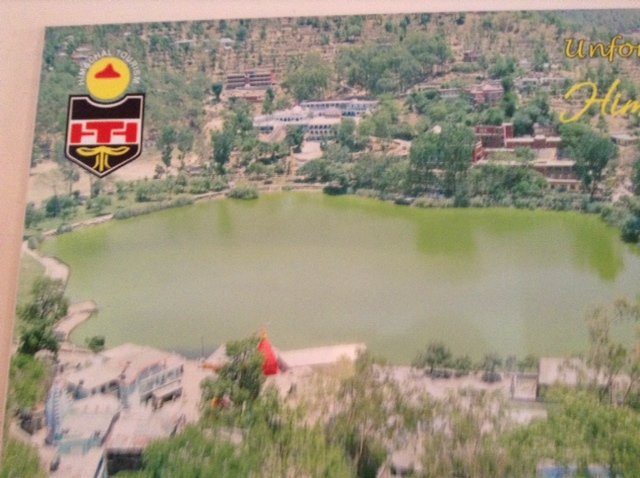
The official Himachal tourism pic. of Rawalsar Lake - the gurdwara is in the centre - far side of lake.

Pic. of lake taken from gurdwara. In the distance is the 3 storey high statue of Budha
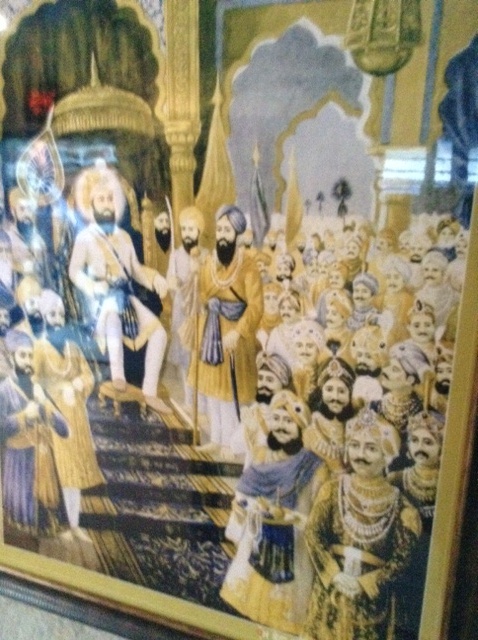
The conference with the Hill Rajas - picture in gurdwara
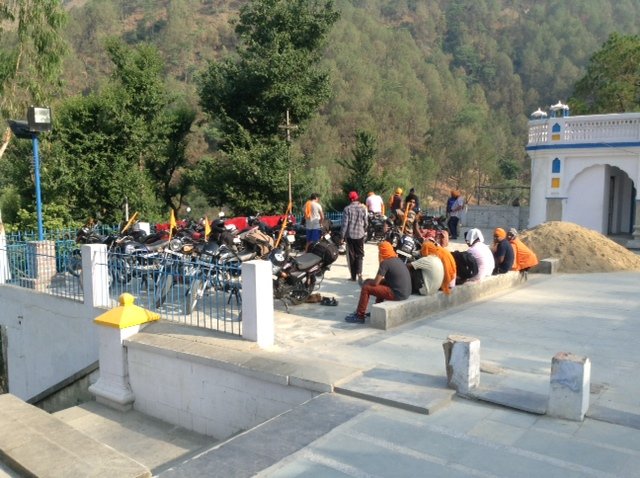
Sikh bikie youths - Bhujangies
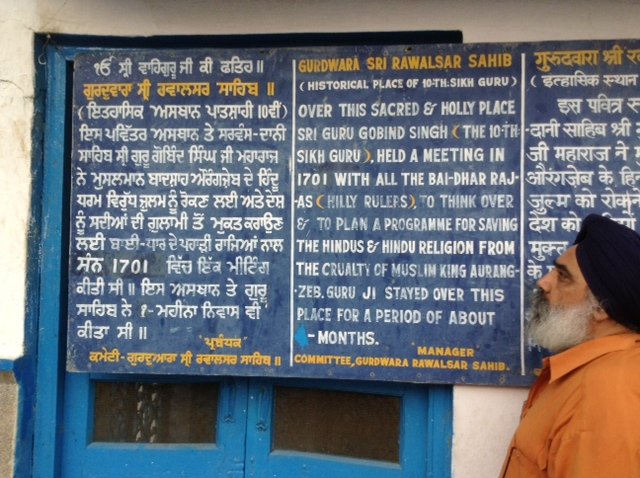
Plaque with Inscription
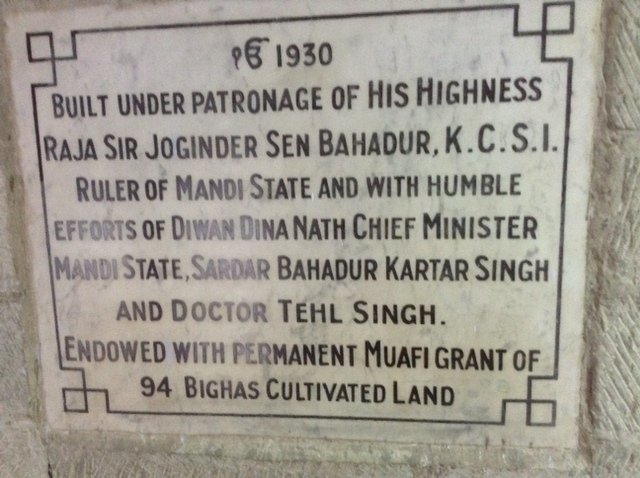
Another Plaque
~ Dya Singh
Exploring the Spirit Thru Music
www.facebook.com/dyasinghfriends
www.dyasingh.com
---------------------------------
Related Article:http://www.sikhnet.com/news/rawalsar-gurdwara-its-importance
